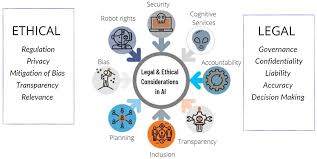Wearable artificial intelligence (AI) technologies show promise in healthcare, with early applications demonstrating diverse benefits for patient safety. These systems go beyond traditional data collection, using advanced algorithms to provide real-time clinical guidance. From infectious disease monitoring to AI-powered surgical assistance, these technologies enable proactive, personalized care while addressing critical safety gaps. However, successful implementation requires careful consideration of technical, operational, and ethical challenges.
In the post-pandemic era, healthcare systems face mounting challenges with managing increasing patient volumes and complexity, leading to persistent issues with preventable adverse events. At the same time, this period has seen remarkable advances in and adoption of digital health capabilities. Wearable artificial intelligence (AI) technologies represent a significant opportunity in health, emerging at this critical juncture and promising to improve consumer or citizen health and safety.
AI-enabled wearable devices, hereinafter referred to as wearable AI, go beyond traditional wearable devices by not only collecting real-time health data, but also using advanced algorithms to analyze multiple types of patient data and provide guidance for clinical care decisions.
This article, focusing on provider-oriented applications, examines how such intelligent wearable systems may improve patient safety and clinical care across healthcare settings—from routine monitoring to complex surgical procedures—marking an important shift from devices that merely collect data to those that predict and prevent errors in real time.
Practical applications of wearable AI in healthcare
The implementation of wearable AI in healthcare spans diverse applications, with several technologies already demonstrating significant impact. Advanced continuous glucose monitoring systems now incorporate AI algorithms that not only track blood sugar levels but predict dangerous fluctuations hours in advance, enabling preemptive interventions for chronic conditions. Similarly, AI-enhanced cardiac monitors utilize machine learning to detect subtle arrhythmias and predict potential cardiac events with high accuracy, significantly improving early detection rates.
A more recent development is the implementation of computer vision and AI-powered camera systems in operating rooms and acute-care settings, including those that can be ‘worn’ by providers during procedures. These systems use deep learning to detect medication errors in real-time, analyzing medication labels, dosages, and administration procedures against patient data and standard protocols. This technology addresses a critical gap in surgical safety, where traditional manual checks may fail amidst intense and multi-directional demands on providers. These technologies, particularly when applied to high-stakes or acute-care settings where individual decisions often swiftly shape outcomes, demonstrate the potential for AI to serve as an intelligent safety net, augmenting human expertise rather than replacing it.
Moreover, in resource-limited settings, novel AI-enabled photoplethysmography (PPG) wearables are now being developed to address critical healthcare gaps, such as in predicting deterioration of dengue fever hours in advance, marking wearable AI’s pivotal and emerging capability to support clinical decision-making in settings where monitoring resources are scarce or with constrained healthcare infrastructure.
Many of these technologies have progressed beyond theoretical concepts, undergoing validation in clinical trials. Some, like certain cardiac and vital sign monitoring systems, have already received FDA approval for clinical use, while others remain in various stages of regulatory review or are being utilized under research protocols.
Potential opportunities for patient safety and care quality
Wearable AI technologies may help improve patient safety protocols and care quality metrics through multiple mechanisms.
AI systems’ predictive analytics capabilities now enable the identification of subtle patterns and early warning signs that precede serious health events. These capabilities are powered by advancements such as transfer learning (a technique where insights gained from one dataset or task are applied to improve performance on a different but related task) and federated learning (an approach that securely trains AI models using data from multiple sources without actually sharing patients’ raw data, addressing key privacy concerns while enabling collaborative model development).
The transition from intermittent to continuous monitoring represents a crucial advancement in patient surveillance – where uninterrupted data streams reveal previously undetectable physiological trends and variability patterns that static measurements miss, offering deeper insights into disease progression and therapeutic response10,11. This capability spans from detecting early sepsis patterns in hospitalized patients to predicting exacerbations in chronic conditions like COPD at home, representing a fundamental shift from reactive to proactive healthcare delivery.
Second, AI-powered contextual awareness may enhance the delivery of personalized care by contiuously adapting interventions and therapeutic guidance based on multidimensional and thus more holistic real-time analysis of patient data12. These systems can automatically adjust medication recommendations or lifestyle guidance by integrating multiple data streams—from sleep quality, to physical activity patterns, to medication plan adherence—enabling personalized interventions that evolve with each patient’s unique conditions, lifestyle constraints, and preferences, more likely to provide patient-centered care and ensure long-term adoption and usage.
Third, the integration of multiple AI wearables is creating intelligent healthcare environments that work in concert to enhance safety. In acute care settings, AI-powered monitoring systems can detect medication errors in surgery and detect and classify bleeding lesions in real-time during colonoscopy, while broadly in everyday care, networks of connected devices can cross-validate readings and decisions to prevent errors and optimize treatment responses. These systems have progressed beyond design stages and are now being tested in controlled clinical environments, with ongoing work to establish standards for adoption across diverse healthcare facilities.







